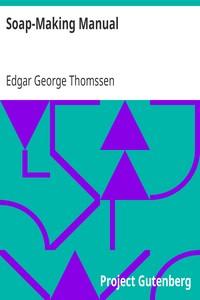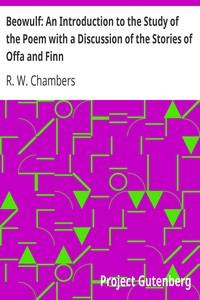Read this ebook for free! No credit card needed, absolutely nothing to pay.
Words: 47174 in 22 pages
This is an ebook sharing website. You can read the uploaded ebooks for free here. No credit cards needed, nothing to pay. If you want to own a digital copy of the ebook, or want to read offline with your favorite ebook-reader, then you can choose to buy and download the ebook.


: Soap-Making Manual A Practical Handbook on the Raw Materials Their Manipulation Analysis and Control in the Modern Soap Plant. by Thomssen Edgar George - Soap Technology
ulfuric acid is used it requires about 1.54 lbs. of acid to one pound of caustic. Therefore to neutralize the caustic soda remaining it requires:
The acid is added and the lye well stirred, after which another sample is taken and again titrated as before. From this titration the amount of acid to be added is again calculated and more acid is added if necessary. Should too much acid have been added, caustic soda solution is added until the lye is between exactly neutral and 0.02% alkaline. The filtered lyes at this stage have a slight yellowish cast.
To be sure that the lyes are treated correctly the precipitation test is advisable. To carry this out filter about 50 c. c. of the treated lye and divide into two portions in a test tube. To one portion add ammonia drop by drop. If a cloudiness develops upon shaking, more alkali is added to the lye in the tank. To the other portion add a few drops of 1 to 5 sulfuric acid and shake the test tube. If a precipitate develops or the solution clouds, more acid is needed. When the lyes are treated right no cloudiness should develop either upon adding ammonia or the dilute acid.
The properly treated lye is then run through the filter press while slightly warm and the filtered lye is fed to the evaporator from the filtered lye tank. The lye coming from the filter press should be clear and have a slight yellowish cast. As the pressure increases it is necessary to clean the press or some of the press cake will pass through the cloths. Where sodium silicate is used as a filler, the silicate scrap should never be returned to the soap kettle until the glycerine lyes have been withdrawn. This practice of some soapmakers is to be strongly censured, as it causes decided difficulty in filtering the lye, since during the treatment of the lye, free silicic acid in colloidal form is produced by the decomposition of the sodium silicate by acid. This often prevents filtering the treated lye even at excess pressure and at its best retards the filtering.
As to the filter press cake, this may be best thrown away in a small factory. Where, however, the output of glycerine is very large it pays to recover both the fatty acids and alumina in the press cakes.
In some cases, especially when the lyes are very dirty and the total residue in the crude glycerine runs high, for which there is a penalty usually attached, a double filtration of the lye is advisable. This is carried out by first making the lye slightly acid in reaction by the addition of alum and acid, then filtering. This filtered lye is then neutralized to the proper point with caustic, as already described, and passed through the filter press again.
While in the method of treating the lyes as given sulfuric acid is used for neutralizing, some operators prefer to use hydrochloric acid, as this forms sodium chloride or common salt, whereas sulfuric acid forms sodium sulfate, having 3/5 the graining power of salt, which eventually renders the salt useless for graining the soap, as the percentage of sodium sulfate increases in the salt. When the salt contains 25 per cent. sodium sulfate it is advisable to throw it away. Sulfuric acid, however, is considerably cheaper than hydrochloric and this more than compensates the necessity of having to eventually reject the recovered salt. It may here also be mentioned that recovered salt contains 5-7 per cent. glycerine which should be washed out in the evaporator before it is thrown away. The following tables give the approximate theoretical amounts of acids of various strengths required to neutralize one pound of caustic soda:
For 1 pound of caustic soda--
For 1 pound of caustic soda--
It is, of course, feasible to neutralize the spent lye without first determining the causticity by titrating a sample and this is often the case. The operator under such conditions first adds the sulfate of alumina, then the acid, using litmus paper as his indicator. Comparatively, this method of treatment is much slower and not as positive, as the amount of acid or alkali to be added is at all times uncertain, for in the foaming of the lyes their action on litmus is misleading.
After the lye has been filtered to the filtered lye tank it is fed to the evaporator, the method of operation of which varies somewhat with different styles or makes. When it first enters the evaporator the lye is about 11?-12? B. After boiling the density will gradually rise to 27? B. and remain at this gravity for some time and during which time most of the salt is dropped out in the salt filter. As the lye concentrates the gravity gradually rises to 28?-30? B., which is half crude glycerine and contains about 60 per cent. glycerine. Some operators carry the evaporation to this point and accumulate a quantity of half crude before going on to crude. After half crude is obtained the temperature on the evaporator increases, the vacuum increases and the pressure on the condensation drain goes up . As the liquor grows heavier the amount of evaporation is less, and less steam is required necessitating the regulation of the steam pressure on the drum. When a temperature of 210? F. on the evaporator, with 26 or more inches vacuum on the pump is arrived at, the crude stage has been reached and the liquor now contains about 80 per cent. glycerine in which shape it is usually sold by soap manufacturers. A greater concentration requires more intricate apparatus. After settling a day in the crude tank it is drummed.
Crude glycerine free from salt is 33? B., or has a specific gravity of 1.3. A sample boiled in an open dish boils at a temperature of 155? C. or over.
Free books android app tbrJar TBR JAR Read Free books online gutenberg
More posts by @FreeBooks

: Science of Trapping Describes the Fur Bearing Animals Their Nature Habits and Distribution with Practical Methods for Their Capture by Kreps Elmer Harry - Trapping Animal; Animals-Wild-Trapping



: Encyclopaedia Britannica 11th Edition Arculf to Armour Philip Volume 2 Slice 5 by Various - Encyclopedias and dictionaries





